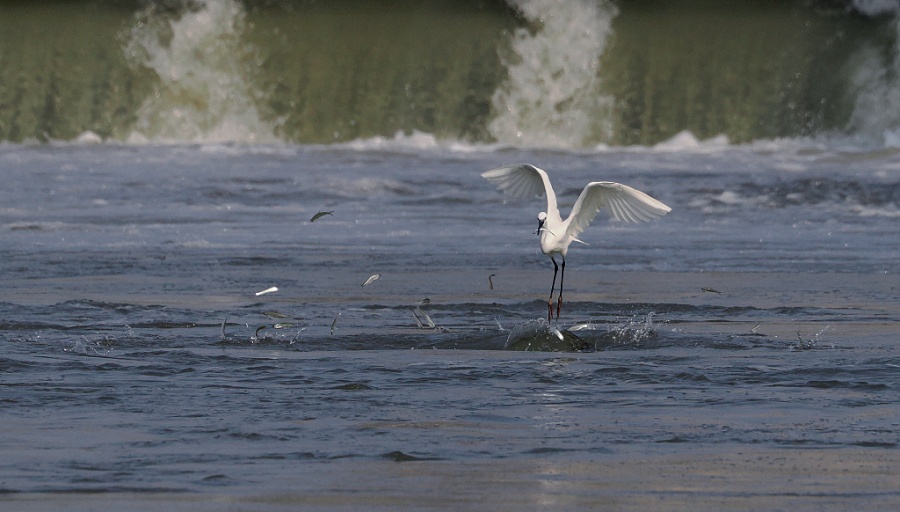Ecological revival cited in Yangtze

The Yangtze River is experiencing an ecological revival with the return of some endangered species, as the country forges ahead with a campaign to conserve and restore the mother river of the Chinese nation, according to the Ministry of Ecology and Environment.
Huang Xiaozeng, head of the ministry's department of water ecology and environment, made the remarks in a news conference on Friday.
Last year, 95.6 percent of monitoring sections for surface water in the Yangtze river basin reported fairly good quality, representing a 1.1-percentage-point increase from the previous year, he said.
China has a five-tier quality system for surface water, with Grade I as the best. The quality can be considered as being fairly good if it reaches Grade III, which is good enough for most aquatic organisms to survive.
Notably, the main channel of the Yangtze River has maintained water quality at Grade II or above for four consecutive years, he revealed.
He also noted a remarkable increase in biodiversity in the basin, with 227 indigenous fish species monitored last year, compared to 193 in 2022, he said.
He said the number of aquatic wild animals under national protection has also increased, reaching 14 last year, three more than the previous year.
"After a hiatus of three decades, for instance, Coilia nasus, an endangered fish species, has been sighted once again in the middle reaches of the Yangtze and the Dongting Lake," he said.
Dongting is the country's second-largest freshwater lake that connects rivers in Hunan province with the Yangtze.
Moreover, the population of the Yangtze finless porpoises has climbed to 1,249 last year, marking a 23.4 percent increase since 2017.
These positive developments can be attributed to a series of measures implemented since the launch of the Yangtze conservation and restoration campaign in August 2022.
These measures include enhanced sewage discharge management, with environmental officials identifying and addressing over 140,000 sewage outlets along 140,000 kilometers of river and lake shorelines, he said.
Additionally, 1,769 new sewage treatment facilities have been built in 1,235 provincial-level and above industrial parks.
As a result of these consistent efforts, black and odorous water bodies in urban areas along the Yangtze have been virtually eradicated, he noted.
In a move to guarantee high-quality development, he said over 16,000 grids have been designated for ecological and environmental management along the river, each with tailored blacklists for project introduction.
China has experienced consistent improvement in the quality of surface water not only in the Yangtze but also across the country, according to the Ministry of Ecology and Environment.
Last year, 89.4 percent of monitoring sections for surface water across the country registered fairly good quality, up by 1.5 percentage points from the previous year.
